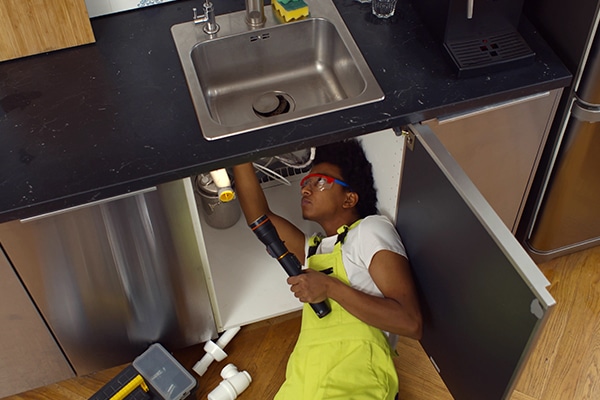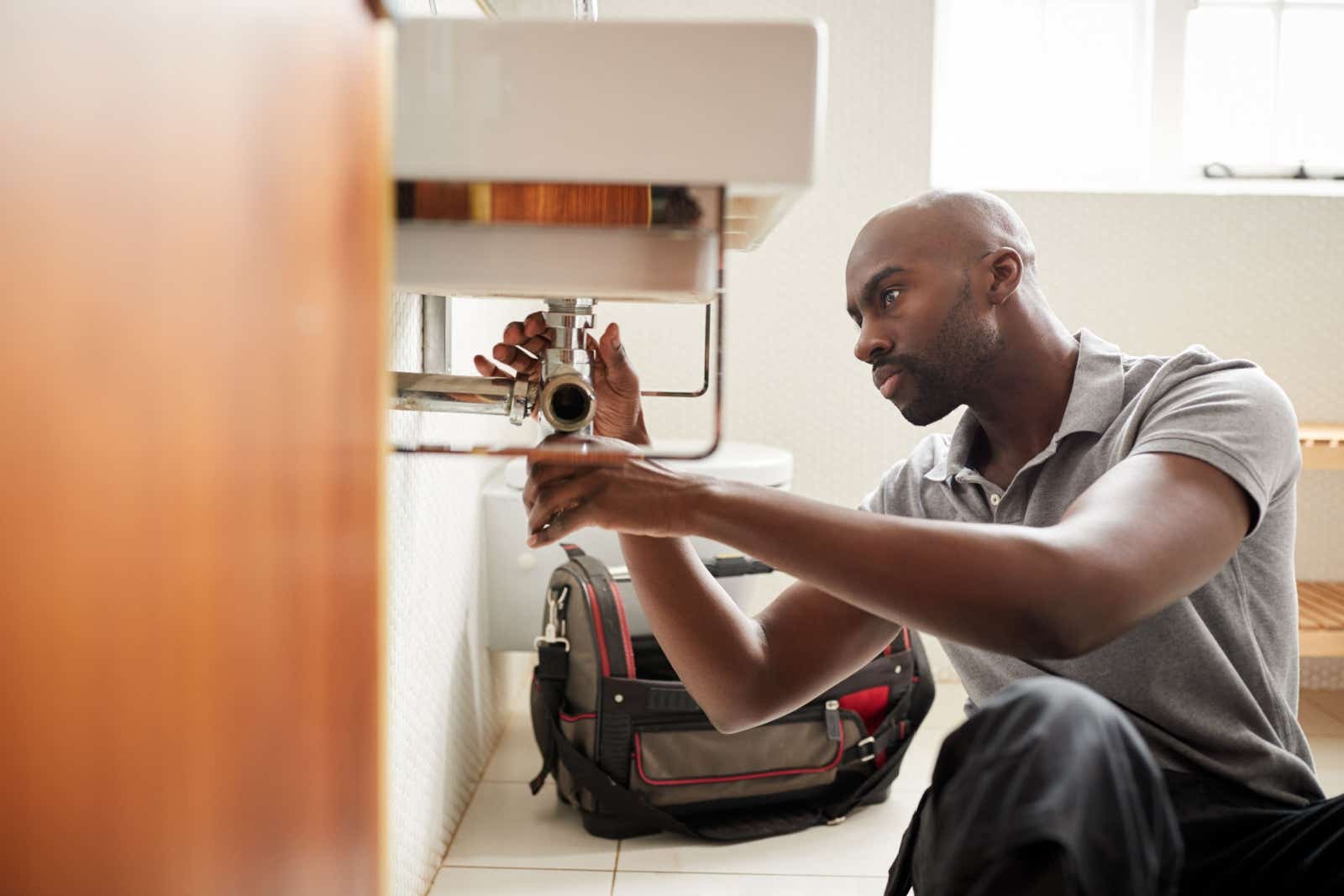Essential Plumbing Alabaster AL Tips for Homeowners
Essential Plumbing Alabaster AL Tips for Homeowners
Blog Article
A Step-by-Step Overview to Reliable Hot Water Heater Setup for Ideal Performance
Embarking on the task of mounting a hot water heater is an endeavor that demands precision and a systematic strategy for attaining ideal performance. The process starts with the essential choice of picking the suitable heating system customized to the details demands of your house, taking into consideration elements such as size, kind, and energy source. As soon as picked, preparing the setup area to satisfy safety criteria is vital. The journey doesn't finish here. As you proceed, the details of attaching water supply lines and establishing up reliable electric or gas connections wait for, promising understandings right into guaranteeing efficiency and reliability.
Selecting the Right Hot Water Heater

Next, take into consideration the dimension and capacity of the water heating unit. It's essential to assess your home's warm water needs, which can vary based on the variety of residents and their use patterns. A device that's too little may bring about insufficient warm water, while an extra-large model could lead to unneeded energy usage.
Effectiveness rankings also play a crucial function in choice. Seek hot water heater with high Power Factor (EF) scores, showing remarkable efficiency and decreased energy use. Tankless models, though normally more costly upfront, deal significant power savings gradually as a result of their on-demand heating abilities.
Preparing the Installment Area
Before setting up a brand-new water heating unit, careful prep work of the setup location is essential. This ensures a smooth installment procedure and aids protect against future complications (Water Heater installation Alabaster AL). Begin by picking an ideal area that abides by neighborhood building ordinance and safety and security criteria. The area should be dry, well-ventilated, and accessible for upkeep. It's crucial to gauge the area meticulously to suit the water heating system's measurements, guaranteeing sufficient clearance around the unit for reliable procedure and maintenance.
Next, eliminate any kind of particles, dust, or obstructions from the site to produce a tidy setting. Check the floor for stability, as the hot water heater will certainly require a strong, level surface to operate efficiently. If needed, mount a drip frying pan beneath the system to capture potential leaks or spills, avoiding water damages to the surrounding location. In areas vulnerable to seismic activity, think about setting up seismic bands to protect the heating unit securely in area.
Furthermore, make sure that all required tools and materials get on hand prior to beginning the setup. This consists of products such as wrenches, screwdrivers, a level, and any added equipment needed for installing and protecting the heater. A well-prepared installment location sets the foundation for a successful water heating unit configuration, enhancing performance and safety.
Connecting Water Lines
When attaching water lines to your freshly set up hot water heater, it is essential to make certain that all links are leak-free and safe and secure to maintain efficient operation and protect against water damages. Begin by determining the warm and cold water supply lines. The cool water inlet is typically marked with a blue label or a "C", while the warm water electrical outlet is noted with a red tag or an "H".
Use adaptable water heating unit connectors to assist in a less complicated installment process. Prior to attaching the adapters, position a plumber's tape around the threaded ends of the water heater's inlet and electrical outlet pipes.
Once links remain in place, gradually transform on the major water system valve. Check each link for leakages by visually inspecting and feeling for moisture. Tighten up links as required, and make sure the stress alleviation valve is properly set up, securing against excessive stress build-up.
Setting Up Electrical or Gas Connections
Correctly setting up the electric or gas links for your hot water heater is a vital action to make certain effective and safe procedure. For electrical hot water heater, start by validating that the electrical circuit is suitable with the heating system's voltage and amperage demands. Guarantee the power supply is turned off at the circuit breaker to stop crashes. Link the electrical wires to the heating system complying with the producer's wiring layout. Generally, this involves connecting the ground cord to the eco-friendly terminal, and the remaining cords his response to their equivalent terminals, protecting each with wire nuts.
For gas hot water heater, safety is paramount. Confirm that the gas supply is off prior to proceeding. Attach the gas line to the hot water heater making use of an adaptable gas port, ensuring it is properly threaded and sealed with pipe joint compound or Teflon tape ideal for gas links. Tighten the links with a wrench, taking care not to over-tighten (Drain Cleaning Alabaster AL).
Once connections are made, inspect for any kind of potential leakages. For gas lines, use a soapy water solution to the joints; bubbles suggest a leakage. For electric connections, verify that all wiring is safe and correctly shielded, maintaining conformity with neighborhood electrical codes.
Examining and Adjusting for Effectiveness
With the electrical and gas connections firmly in area, the following step is reviewing the operational performance of your water heater. Begin by meticulously turning on the water supply and making certain there are no leaks at any of the shutoffs or joints.
Next, carry out a comprehensive inspection to make certain the home heating aspects or burner are operating properly. For electric heating systems, use a multimeter to confirm if the elements are attracting the proper current. In gas versions, observe the burner flame; it must be blue and stable, showing effective burning.
Change the settings as essential to get rid of inefficiencies. Consider applying insulation procedures, such as adding a hot water heater covering, to even more enhance efficiency by reducing heat loss. In addition, check the anode pole's condition, as a worn-out pole can lower effectiveness and bring about storage tank deterioration.
Final Thought
Reliable water heater installation is important Web Site for making sure optimum performance and power financial savings. Securely attaching water supply lines and thoroughly establishing up electric or gas connections decrease possible issues.

Correctly establishing up the electric or gas connections for your water heating unit is a crucial action to make sure secure and efficient operation. For electrical water heating units, start by validating that the electric circuit is compatible with the heating unit's voltage and amperage demands. More Help Attach the gas line to the water heating system using a flexible gas port, ensuring it is appropriately threaded and secured with pipe joint substance or Teflon tape ideal for gas connections.
Report this page